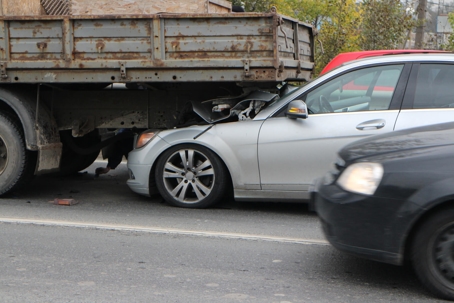A state’s laws surrounding automobile accidents and the resulting claims put them into one of two basic categories: no-fault or fault-based systems. Indiana law places the state into the second column. There are advantages to Indiana’s fault-based approach. Give us a call at (219) 300-5204.
What Does it Mean to Be a No-Fault State?
Unlike Indiana, some states have adopted a no-fault method of handling auto accident claims. There, an injured driver has the option to file a claim for medical costs, lost earnings, and other expenses with her own insurance company. This is an option available to them no matter who may be responsible for the collision. Sounds like a great deal, right? In theory, maybe, but in practice, a no-fault system has its problems.
The primary issue with no-fault states is that auto insurance can cost much more there. For example, Michigan—which is a no-fault state—has an average annual car insurance rate of $2.693. The average yearly cost for car insurance for Indiana, by contrast, is only about $1,133, nearly 21% less than the national average.
With fault-based systems, such as the one in place in Indiana, each driver’s insurance firm has to foot the bill for the damages that the responsible driver has caused.
Essentially, this means bad or reckless drivers end up paying more, whereas good, responsible drivers pay less. It makes sense, because the burden of paying for damages resulting from auto accidents lies on the people that caused them.
How to Determine Fault in a Car Accident
In the aftermath of an auto accident, the involved parties can issue conflicting statements. Fortunately, there are many factors that avoid determination coming down to a “his word against mine” situation. Determining what actually happened and who bears the blame is determined in a number of ways.
Evidence of who and what caused an accident can come from photos taken after the scene, nearby security cameras, witness statements, onboard computers, phone data, and even social media can provide supporting information that helps establish who was responsible. Inspection of the scene after the accident can also play a part.
Investigators can tell a lot from skid marks on the pavement, nearby street signs, lane markings, and other things. Because the process of collecting and presenting evidence can be complex, it is important to engage an attorney if you’ve been in an accident, no matter who you believe may be at fault.
What is Comparative Fault?
Often, the two parties in an auto accident share the blame. Accidents can happen due to multiple causes, even outside factors, and both parties can share responsibly. One party, however, bears more of the blame than the other. How much of the responsibility each of the parties bears can impact what happens in an auto claim.
Indiana operates under “comparative fault.” It means the fault of the injured party (or the claimant) must be lesser than the defendant (at-fault party). In other words, if it is determined that the injured party actually is 51% liable for the collision, they are not eligible to receive compensation. If the injured person is determined to carry less than 51% of the blame, damages typically get reduced by the percentage of fault they bear. For example, if you are determined to be 10% to blame, then the amount of damages awarded will be reduced by 10%.
No Pay, No Play: What Does it Mean?
Driving without at least liability insurance is against the law in Indiana. Unfortunately, that doesn’t prevent some irresponsible motorists from getting behind the wheel without even the minimum required coverage. In the event an uninsured driver gets into an accident, Indiana’s “no pay, no play” statute comes into effect.
This statute means that if an uninsured motorist gets injured or their car sustains damage in an accident, they cannot receive compensation for noneconomic damages (like pain and suffering, mental anguish, physical impairment and others). In this state, it applies to certain motorists without liability insurance at the time the accident occurred, and who had received a prior violation under motor vehicle financial responsibility law.
What is PIP Insurance?
Injuries incurred during an auto accident can be hugely expensive. Personal injury protection (PIP) insurance helps mitigate some of those costs—it covers medical bills and other expenses, regardless of which party is determined to be responsible. While PIP coverage is not required by law in Indiana, the financial protection this coverage affords can make it worthwhile.
PIP coverage provides relief from more than just hospital bills. It can include:
- compensation for medical expenses, such as back injury treatment, surgery, dental repair, ambulance rides, medical supplies and more.
- lost wages if the driver or passenger are unable to work due to accident-associated injuries
- “substitute services” such as cleaning, home repair, and other household tasks if the accident leaves you unable to perform them
- funeral expenses if accident-related injuries result in a fatality.
Dealing with the pain, expense and confusion of an auto accident can be complicated, no matter who is at fault. Contact the expert injury attorneys at Alvarez Law Office for committed legal assistance.

